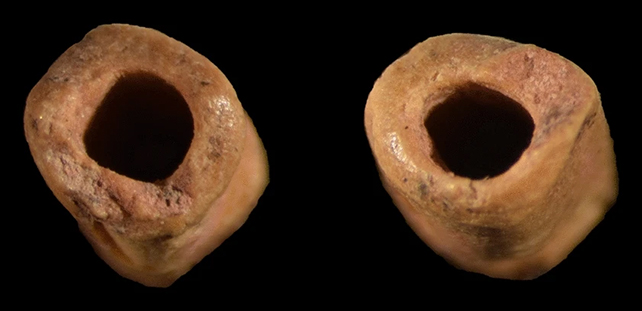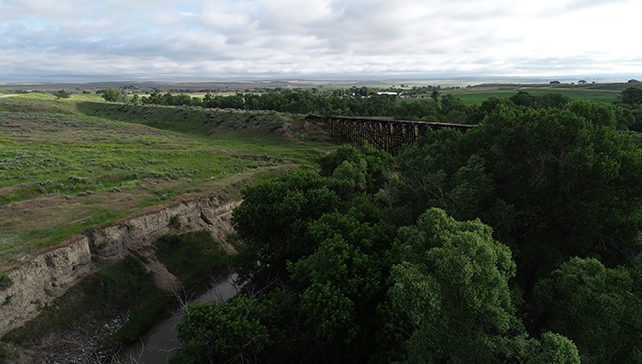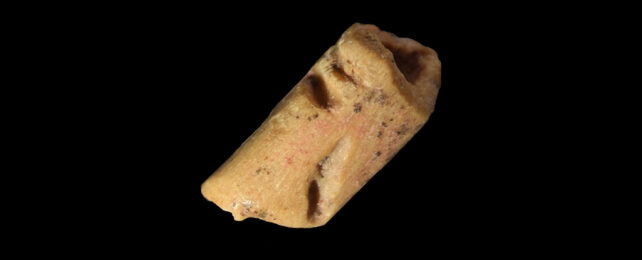Really old artifacts are always fascinating, acting almost like time machines in the way that they let us peer back through hundreds or even thousands of years of history – and archaeologists have just discovered a tube-shaped bead in Wyoming that is thought to be some 12,940 years old.
The bead is the oldest ever found in the Western hemisphere: it's just 7 millimeters (0.28 inches) long and 2.9 mm (0.11 inches) in diameter. According to the team that identified it, it has a lot to tell us about personal ornamentation in the Clovis culture, active around 11,500-10,800 BCE.
After careful analysis, the conclusion is that the bead is made from either the metapodial or the proximal phalanx bone of a hare, pushing back the timeframe for using hare bones for this decorative purpose.

"While the use of hare bone for the manufacture of beads was a common practice in western North America during the Holocene, its origins can now be traced back to at least the terminal Pleistocene," write the researchers in their published paper.
The analysis involved a type of mass spectrometry known as ZooMS, where the molecular composition of a material is revealed by triggering a series of chemical reactions. In this case, the researchers were able to take measurements from the bone's collagen protein.
While the possibility that the bone was simply left behind after the hare had been eaten or decayed, it seems unlikely: the ends are smoothed and polished, while there are grooves marked into the sides. The bead was also found amongst other cultural artifacts.

Beyond this bone bead, the rest of the site is intriguing as well. It's a camp based around the site of a killed or scavenged Columbian mammoth, with several activity areas centered on hearths. It's thought that people would've lived here for an extended period of time.
We're talking about the first people ever to populate this part of the world, many millennia ago, and work continues on this and other sites to discover more about how Clovis societies lived and worked.
And the discovery of the bone can tell experts more than you might think, given its tiny size – it offers hints about hunting, hierarchy, personal decoration, and even migration patterns, through a comparison of similar beads from different places and times.
"We hesitate to engage in extensive speculation as to the significance of bead use during Clovis times except to reiterate that beads and other personal ornaments and extrasomatic augmentations are most commonly used to signal aspects of identity to others," write the researchers.
The research has been published in Scientific Reports.
